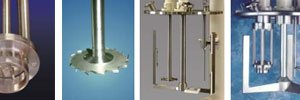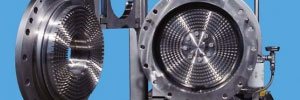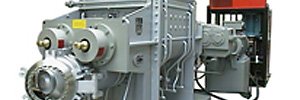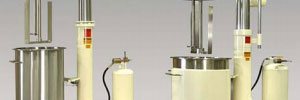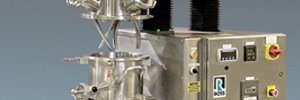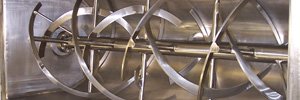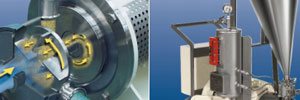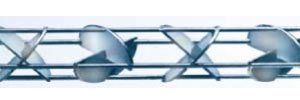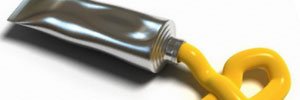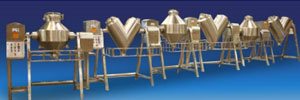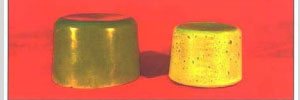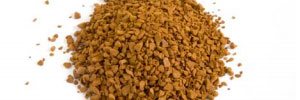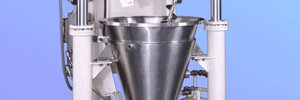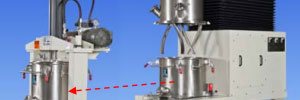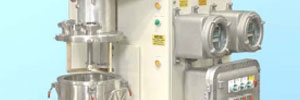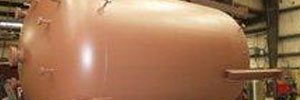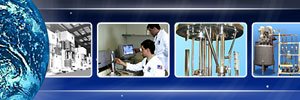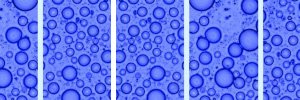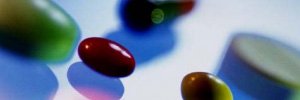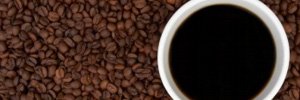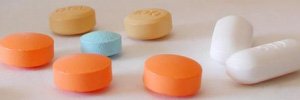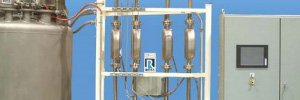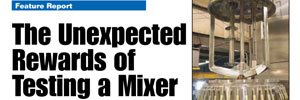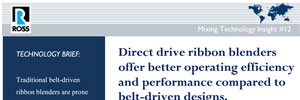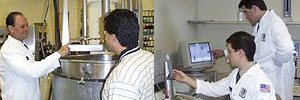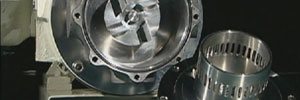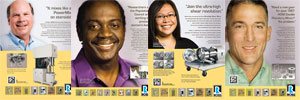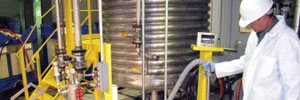Solids Induction Technical Article

Optimize & Speed Up Powder Wetting - Shorten Cycle Times
Solids like fumed silica, calcium carbonate, gums and thickeners are difficult to wet out and often stubbornly float on the surface of a liquid during the mixing process. The newest generation of powder inductor/mixers − called the In-line Solid/Liquid Injection Manifold, or “SLIM,” combines the mixing of powders and liquids simultaneously. The powders are directly injected into a specially engineered high-speed rotor/stator, where the powder is immediately dispersed into the liquid stream. In many applications, these new solid/liquid injection systems shorten mixing cycles by more than 50%.
Since this new in-line system eliminates the need to dump solids directly into an open batch vessel, it virtually eliminates “dusting,” too. This has led to a significant reduction in the volume of airborne particles in plants that have switched to the new induction system.
As with any other mixer or blender, the process of specifying a powder induction system for your application is best accomplished working closely with your mixer manufacturer, in a testing laboratory. This gives you an opportunity to systematically assess the unit’s efficiency, working with your own ingredients, in a controlled setting. It also allows you to refine your mixing technique – an important step in optimizing the performance of any mixer.
The process should always involve close collaboration with the engineers who will specify your powder induction system. To make the process as smooth and efficient as possible, bring the right information to the table − and be ready to address the following key issues in system specification.
Know your product Start by identifying the characteristics of your raw ingredient streams as well as the final product (the result of mixing liquid and powder). The amount of powder you can induct into a liquid stream depends largely on the viscosity and flow characteristics of the materials your machine must handle. Transfer rates are generally highest when viscosities are low, but SLIM systems perform well across a wide range of viscosities. Induction rates are not affected significantly by the specific gravity of the powdered component. Transfer rates relate more directly to the natural flow properties of the powder.
Optimize the system In general, higher horsepower and larger rotor sizes will produce greater powder flow. Working with your mixer manufacturer, choose the configuration that balances horsepower, rotor diameter and throughput to meet your production requirements. Field experience and laboratory tests have shown that to optimize powder induction, you should run your solid inductor/mixers at maximum speed − even when it appears that performance is adequate at lower speeds. AC variable frequency inverter drives allow you to change speeds and fine-tune shear rates before or after the powder induction phase. But speeds are best kept constant during powder induction. Shear rates can also be adjusted by choosing the stator design that provides the optimum balance between shear and flow. The most common choices are the Slotted Head and the Square Hole Disintegrating (LSHD) head. The Slotted Head stator provides an elevated shear rate, but maximum powder induction is usually achieved with the LSHD because it poses less restriction and allows higher flow.
Optimize interconnections Achieving optimal performance relies highly on the velocity of the fluid as it passes through the inductor/mixer. Any factor that adversely affects the inlet or outlet flow of the liquid will have a negative effect on powder induction. When making inlet and outlet connections, always use tubes and hoses with the largest possible diameter. Minimize restrictions and disturbances to flow by using full-ported ball valves and avoiding butterfly valves, elbows, and “tees” in the line. Locate the powder inductor/mixer close to the source of the incoming liquid, and keep the discharge tubing short.
Of course, this solids-induction device is also a high shear mixer − and recirculation gives you an excellent opportunity to fine-tune particle size. This can be especially advantageous in applications that require extremely high quality end-products with a tightly-defined particle size distribution. When returning the product to the recirculation vessel, submerge the return flow under the surface of the liquid to minimize aeration.

